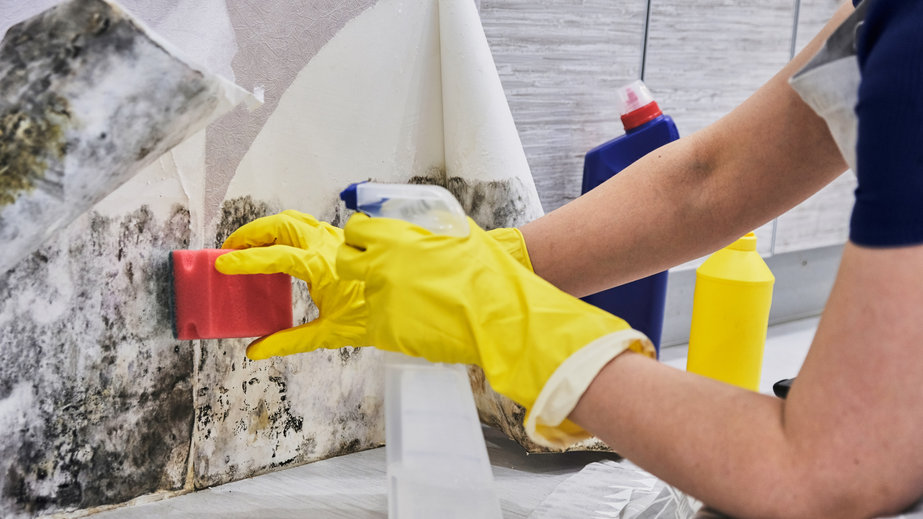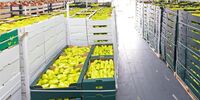Mold has contaminated food items since the beginning of time. Most commercial kitchens, food manufacturers, and other foodservice providers pursue different ways to prevent mold formation, but it remains inevitable. Mold can affect building surfaces, products, and the environment. Mold in the freezer can lead to huge losses for food businesses. It can cause mold-related illnesses, lead to health and safety violations, and damage food products completely. In this article, we discuss what is mold, ways to identify mold growth, causes behind mold formation in the fridge, ways to prevent mold in the refrigerator, the ideal temperature for mold prevention, steps to get rid of mold, the dangers of mold development, and some additional tips to prevent the growth of mold.
What is Mold?
Mold is fundamentally a fungus. It is a type of fungus that can grow in various indoor and outdoor conditions. Warm and humid conditions can significantly increase the growth of mold. Even colder temperatures with high moisture levels support mold growth. Thus, walk-in coolers or freezers provide ideal conditions for mold to grow. Temperature fluctuations can also lead to severe mold formation inside walk-in units.
How to Identify Mold Growth
It is essential to identify mold in walk-in refrigerators. Some obvious cues may include black or grayish growth around sinks, cardboard boxes, and other materials. Mold growth can appear on walls, floors, ceilings, and kitchen equipment. However, some types of mold growth can be white and powdery. White mold growth can be found in cooler temperatures, like walk-in coolers. White mold can look similar to oxidative degradation, but it is highly lethal.
What Causes Mold in a Fridge?
There are various causes of mold in refrigerators, but the most common cause is rotting food. Mold can spread through air and surface contact. Mold in refrigerators can also appear when you switch off your refrigerator for longer periods. Additionally, mold grows more profusely in darkness. Mold in walk-in coolers can occur when the humidity level inside the cooler or freezer goes above 70%.
How to Prevent Mold in a Refrigerator
Mold in freezers or refrigerators can be prevented by taking some necessary steps. Here is a list of precautions that you can take to stop mold in your walk-in cooler:
- Minimize Condensation: Due to walk-in cooler condensation problems, mold can appear in food products and the interior panels of the refrigerator. Walk-in cooler condensing leads to a high humidity level in the fridge, and humidity helps in mold formation. You can prevent mold formation by ensuring there is no stagnant water in the fridge or walk-in cooler.
- Refrigerator Maintenance: There are a lot of components in walk-in coolers. If there are any issues with any of the mechanical parts of your walk-in cooler, it can stop working, ultimately increasing the chance of mold formation. Notably, the condensing oil, fans, and evaporator regulate the airflow inside a walk-in refrigerator. Proper ventilation or airflow can keep the refrigerator dry and prevent the formation of excess moisture.
- Keep Doors Closed: Frequent opening of doors allows outside air to change the humidity and temperature levels inside your refrigerator, which can lead to mold in walk-in coolers. Sometimes mold spores from outside can also enter the refrigeration unit through the air.
- Prevent Spillage: Mold in coolers can occur from spilled food or liquid. Cleaning up spills can prevent mold formation in coolers, as this eradicates the source.
- Complete Cleaning: Sometimes, mold formation can recur even after cleaning the surfaces and throwing away contaminated food products. During such times, you can opt for a complete clean-up of your walk-in cooler unit. Additionally, you can spray disinfectants in your refrigerator to prevent mold growth. Mostly, cleaning your refrigerator or freezer can prevent freezer mold.
The Ideal Temperature For Mold Prevention
Mold forms when there is a sudden fluctuation of temperature and humidity levels. For walk-in coolers, the ideal temperature range is 36 to 45 degrees Fahrenheit. This particular temperature range prevents the growth of mold spores. Additionally, keeping the doors of the walk-in cooler sealed tightly will stop sudden temperature drops. It also prevents the hot and humid air in the kitchen from seeping into the cooler.
Steps to Get Rid of Freezer Mold

Yearly maintenance or cleaning of your walk-in unit can help you get rid of mold. Clean your walk-in unit’s surface, walls, shelves, and ceiling twice a year. Here are some simple steps to prevent mold formation in refrigerators:
Step 1: Take distilled white vinegar to kill mold or remove it from surfaces. Distilled vinegar is a powerful agent that can prevent mold formation.
Step 2: Take out all the shelves, drawers, and other food storage units from your walk-in unit.
Step 3: Spray the shelves, drawers, and the interior walls of the walk-in unit with vinegar.
Step 4: Let the vinegar rest for a while to give it some time to react.
Step 5: Then, take a rag to scrub the surfaces, then wipe it with a damp cloth.
Step 6: Let the surfaces dry out. Repeat the process 2-3 times.
Step 7: Use hot water and detergent to wash the rags that came into contact with the mold.
Step 8: Check the rubber seal around the edges of the door. To clean the mold around the rubber seal, you can use one to two tablespoons of chlorine bleach and mix it with some water. You can also add some baking soda or lime wedges.
You can also prevent mold in walk-in coolers by using a bleach solution. The bleach-to-water ratio can be 1:32. Once the process is complete, you can rinse the surface with water and dry it thoroughly. Sorting food items in the refrigerator and throwing away rotten food products can also prevent mold in refrigerators.
The Dangers of Mold Development
Mold formation in walk-in units should be prevented at all costs. Freezer mold in commercial walk-in freezers or refrigerators can damage food products. Consuming mold-induced food products can lead to serious health issues. Inhaling mold fumes can lead to serious respiratory illnesses. Mold can cause serious allergic reactions, and some people may experience sinus congestion, coughing, irritated eyes, asthma-like symptoms, and rashes. Mold formation can be highly problematic for people with compromised immune systems. Primarily pregnant women, the elderly, and children are affected by mold.
Additional Tips to Stop or Minimize Mold in Refrigerators
Here are some extra tips to limit the growth of mold in walk-in coolers:
- Limit Paper Products: Limit the use of paper products like agars and cardboards, as paper can be a good source or breathing ground for mold.
- Clean Excess Water: Cleaning excess water formed due to condensation or spillage can help you control mold spread.
- Dry Storage Essentials: If you want to decommission a walk-in unit for a longer period, make sure to clean the unit thoroughly with hot water and detergent. Then wipe it with a clean cloth, and leave the doors open to dry out completely. Keep the door open until the unit is powered up again, as mold can grow in damp, cold air and darkness.
- Professional Cleaning Services: Walk-in units can be tedious to clean and maintain. Hiring professional cleaning service providers or service personnel to clean your walk-in unit can help you prevent mold formation. This enables you to save money in the long run and address all official health and safety concerns.








